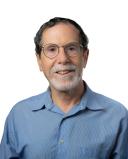Teamwork
Are Government and the Market Strange Bedfellows?
Stiglitz shows why their collaboration is key to a nation’s prosperity.
Posted August 31, 2019

Myths abound on the question of how governments relate to economies. One of the most successfully propagated myths is that the government and the economy are rivals: the more government, the less economic growth and vitality.
A closely linked myth is that this idea was a central doctrine of Adam Smith, the late 18th-century founder of classical economics whose visage still appears on the seal of the American Economic Association (the leading professional organization of research, teaching, business and government economists in the United States). Both myths are among those that are effectively demolished by the 2019 book People, Power and Profits: Progressive Capitalism for an Age of Discontent by the distinguished economist Joseph Stiglitz.
Stiglitz is one of the modern economics profession’s true giants. By age 24, he had earned his Ph.D. in the discipline with barely a year’s study at one of the world’s premier economics departments, MIT. He then held extended positions at three other apex U.S. departments, Yale, Princeton, and Stanford, and began the switch from economic theory (for which he was awarded the Nobel Memorial Prize in Economics in 2001) to policy advising roles in the Clinton Administration and at the World Bank. During the 2000s, he has published several influential books one can read without a Ph.D., including Globalization and its Discontents (2002), Freefall (2010) [about the global financial crisis], and The Price of Inequality (2012). He has moved to a new academic home at Columbia University, has served on numerous important commissions, and is among the top public intellectuals in the economics profession.
Along with the equally notable economist and philosopher Amartya Sen, Stiglitz has been vocal and influential in arguing that neither the levels of stock market indices nor gross domestic product is good indicators of economic welfare. It’s unsurprising, then, that he begins People, Power and Profits by arguing that his views actually have much in common with those espoused in Adam Smith’s famous book, The Wealth of Nations. He accurately states that by the term “wealth,” Smith was referring to economic well-being, not to stocks of gold, silver, or company shares. At the center of Smith’s philosophical and social argument was the idea that past approaches to economic policy (which he called “mercantilist”), approaches that emphasized amassing gold or silver in the national treasury, were prioritizing something disconnected from a country’s true economic prosperity, which should instead be judged by the standards of living of its people.
Stiglitz also rightly criticizes the popular depiction of Smith as a Milton Friedman-esque advocate for the most minimal possible involvement of government in society and the economy. While Smith certainly argued that relatively free markets and the profit motive would lead many kinds of goods to be produced and brought to the consumer market in largest quantity and at lowest cost, he also recognized numerous deficiencies of markets, including the propensity of firm owners to increase their profits by building protective walls around their product, by colluding with each other, or by obtaining protections from government. And he asserted the inadequacy of market forces for promoting broad education of a citizenry, which he felt to be crucial for a liberal polity.
People, Power and Profits is a powerful primer on how America became the first country in history to put a high standard of living within reach of the large majority of its people in the decades after World War II, and why it is rapidly ceding its place as a leading economy with widely shared prosperity to other countries, retreating back into a plutocracy having a large under-skilled population, with a high tech economy that imports top talent from other countries rather than creating it at home. (While Stiglitz was not especially known as a behavioral economist, by the way, he pays explicit homage to and makes use of insights from that field at a number of places in the book.*)
Lesson one is that a key to our erstwhile success was the effective partnership between (on the one hand) government, which funded the construction of a world-class highway system, underwrote the basic scientific research and other investments in what became the world’s top university system, and much else, and (on the other hand) a market-driven economy that included a role for government as a watchdog against monopoly, as well as room for strong labor unions able to exert countervailing power against powerful corporations. The world’s strongest economies today, including Germany, retain more of this balance between government, labor and business that marked the U.S. circa 1960, while our country has shed it (and now pays dearly for having done so, in Stiglitz’s view).
Lesson two is that the idea that government-enforced rules and selective taxes to nudge economic activity—e.g., the carbon tax needed today to discourage reliance on fossil fuels—are manifestly not a kind of sand in the gears of a market economy. Quite the contrary, economies such as the U.S. in the post-War decades or Germany and the Scandinavian economies today, demonstrate that the profit motive and the coordination of the fine details of resource allocation, function every bit as well in the presence of smartly designed and predictable state interventions (other examples being constraints on monopoly, and regulation of financial institutions and securities markets), and in many cases better.
Lesson three, finally, has been a theme of my writing in this space as well: that it is crucial to making a market economy work for the benefit of most citizens that they understand government to be their tool for assuring that the economy works for them. The fact that trusting and using government as a tool for achieving broad-based welfare is so crucial explains why spreading anti-government ideas was prioritized as part of the rightward shift of the American electorate from the late 1970s to recent years. Were People, Power and Profits to achieve its goal of helping return this idea (i.e. that government can be the tool of a country’s people for making its economy work for them) to the robust place in public discourse it once held here and still holds in countries mentioned above and many others (for example France, Canada and Australia), the book will deserve a place on the proverbial bookshelf not far from that occupied by The Wealth of Nations itself.
* Most of Stigtliz’s formal economic modeling remained within the boundaries of the mainstream economics discipline’s assumption that people are rational and self-interested. He described his approach to economics as being unorthodox in one main respect: where traditional economic analysis used the simplifying assumption that information is freely and equally available to all decision-makers, Stiglitz was all about ferreting out the ways in which differences in the quality of information held by the actors on the two sides of a given transaction (e.g., the buyer and the seller, the lender and the creditor, etc.) could be crucial to the outcomes. But behavioral ideas, including reliance on habit and rules of thumb in decision making, and the possibility of drawing on prosociality and public spiritedness to effectively address social issues, feature importantly in his recent work, including the present book.


